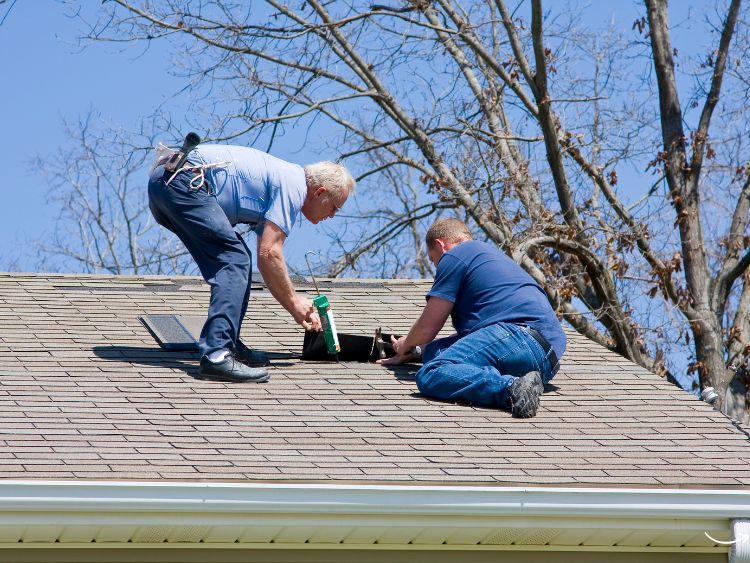In the wake of a storm, the safety and integrity of your home can hinge significantly on the condition of your roof. This comprehensive guide on storm damage roof repair will navigate you through the necessary steps to ensure that your roof is not only fixed but fortified against future tempests.
Storms can strike with little warning, leaving a trail of destruction in their wake. Among the most vulnerable parts of your home is the roof, which bears the brunt of rain, wind, and debris. Knowing how to address storm damage promptly and effectively can be the difference between a quick fix and a costly, extensive repair job. In this guide, we’ll dive into everything you need to know about storm damage roof repair, helping you to quickly restore your home to its former safety and comfort.
Recognizing the Signs of Storm Damage to Your Roof
The first step in effective storm damage roof repair is recognizing the signs of damage. Not all damage is immediately apparent, and some issues may only reveal themselves upon closer inspection. Here’s what to look out for:
- Missing or Damaged Shingles: High winds can tear away shingles, leaving your roof exposed to the elements.
- Water Damage: If you notice stains on your ceiling or walls, it might be a sign that water is seeping through breaches in your roof.
- Clogged or Damaged Gutters: Debris from storms can block your gutters, causing water to pool and potentially damage your roof structure.
- Structural Issues: Look for signs of sagging or structural deformation – these could indicate more severe problems.
Immediate Steps After a Storm
Once the storm has passed and it’s safe to venture outside, taking immediate action can prevent further damage:
- Safety First: Check for any electrical hazards or structural damage around your home before inspecting the roof.
- Document the Damage: Use your camera or smartphone to take clear pictures of any damage. This will be crucial for insurance claims and any professional assessments.
- Temporary Fixes: Cover any breaches with a tarpaulin or temporary sealant to prevent water from entering the home.
Choosing the Right Professional for the Job
It’s crucial to select the right contractor for storm damage roof repair. Here are some tips to ensure you pick a reliable professional:
- Check Credentials: Ensure they are licensed, insured, and have good reviews.
- Get Multiple Quotes: This will help you understand the market rate and options.
- Ask for References: A reputable contractor should be able to provide references from past jobs.
Common Repair Options for Storm-Damaged Roofs
Depending on the extent of the damage, several repair options might be considered:
- Shingle Replacement: Simple and cost-effective, this is a common solution for localized damage.
- Partial Re-roofing: For more extensive damage, replacing large sections of roofing might be necessary.
- Complete Re-roofing: In cases of severe damage or older roofs, replacing the entire roof might be the most sensible option.
Preventive Measures for Future Storms
Prevention is always better than cure. Here are some preventive tips to strengthen your roof against future storms:
- Regular Inspections: Have your roof inspected at least twice a year and after every major storm.
- Proper Maintenance: Keep gutters clear, fix minor issues promptly, and ensure your roof is free of potential debris collectors like overhanging branches.
- Quality Materials: When repairs are needed, choose high-quality materials that can withstand harsh weather conditions.
FAQs
Q: How quickly should I repair my roof after storm damage?
A: Immediate action is recommended. Quick repairs can prevent further damage and reduce the overall cost.
Q: Can I repair a storm-damaged roof myself?
A: For minor damage, DIY might be feasible. However, for safety and efficacy, professional repairs are recommended for significant damage.
Q: What is the typical cost of storm damage roof repair?
A: Costs can vary widely based on the extent of damage and the materials used. Typically, homeowners spend between $300 to $1,000 for minor repairs and up to $10,000 for major restorations.
Conclusion
Dealing with storm damage can be stressful, but with the right approach and professional help, your roof can be restored to its optimal state swiftly and efficiently. Remember, the key to successful storm damage roof repair lies in prompt actions, choosing the right contractor, and taking preventive measures to mitigate future damage.
Stay safe, be prepared, and don’t let the next storm take you by surprise!



